 |
| In front of the courthouse |
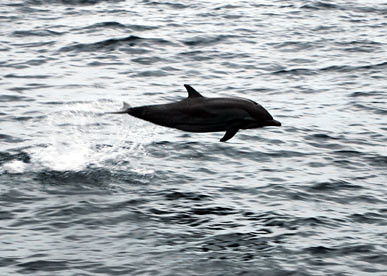 After almost two and a half years Keturah has left South East Asia. It was strange leaving places by now familiar with all the comforts and reassurances (along with the squalls and sudden weather changes) of the Malacca strait. On January 20th pumped on enthusiasm and adrenaline we depart for Maldives. The sailing is quite slow and after four days, once far away from the intense cargo and oil carrier traffic around the northern tip of Sumatra, we are becalmed, leaving us no other occupation than bathing in 4000 meters deep waters, reading and waiting for wind on an oily flat ocean. Halfway the wind turns and we are forced to head NW, the wind dying and shifting all night long, until the bad weather builds up and one last swift turn of the wind rips the mainsail from mast to leach. Knowing that Sri Lanka is just 120 miles away we decide to head there: we've been twelve days at sea already and we have no desire to spend another six or eight days (the distance left for Gan in Maldives) struggling against raging seas and howling winds with a destroyed mainsail and damaged mizzen.
After almost two and a half years Keturah has left South East Asia. It was strange leaving places by now familiar with all the comforts and reassurances (along with the squalls and sudden weather changes) of the Malacca strait. On January 20th pumped on enthusiasm and adrenaline we depart for Maldives. The sailing is quite slow and after four days, once far away from the intense cargo and oil carrier traffic around the northern tip of Sumatra, we are becalmed, leaving us no other occupation than bathing in 4000 meters deep waters, reading and waiting for wind on an oily flat ocean. Halfway the wind turns and we are forced to head NW, the wind dying and shifting all night long, until the bad weather builds up and one last swift turn of the wind rips the mainsail from mast to leach. Knowing that Sri Lanka is just 120 miles away we decide to head there: we've been twelve days at sea already and we have no desire to spend another six or eight days (the distance left for Gan in Maldives) struggling against raging seas and howling winds with a destroyed mainsail and damaged mizzen.
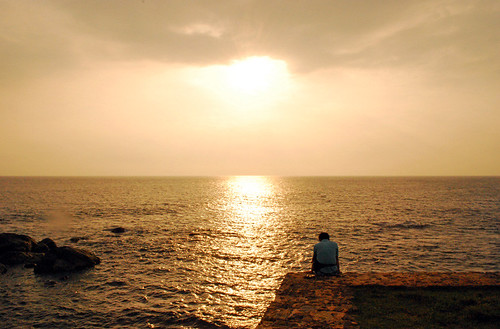 |
| Galle sunset |
 |
| Chagos, absolutely no place like it |
 We head out into town hoping to see regular people being different than
the authorities, but we soon are disappointed: from chicken to engine
parts anything we ask in the shops is jacked up to be dearer than in
Europe! Even the laundry comes back with a 1 Euro a piece tag (even
laundry needed the agent's intervention and cut) which is preposterous,
or even more rather insulting, do they think us stupid?! It is obvious
we are our agent’s and port authorities’ hostages, and their only goal
is to shamelessly squeeze every penny out of us by impeding any independent purchase or inquiry of our own. This is as bad to the point that when going to an shop to inquire for some sail stitching, they also tell us to speak to our agent first, they won't deal with us directly...later the agent of course coolly informs us that we must pay customs duty to "import" our sail into Sri Lanka in order to bring it in town to fix it, I practically tell them to go f**k themselves...Sometimes countries are poor for a reason and Sri Lankans' self defeating greed discourages us to spend any unnecessary penny here (we have better things to do than bargaining over basic groceries and tuk tuk rides); still at the fix price supermarket, we find really good and cheap parmesan, delicious locally made yoghurt and some special marmalades by a German lady “Kern & Hundt” which are to die for.
We head out into town hoping to see regular people being different than
the authorities, but we soon are disappointed: from chicken to engine
parts anything we ask in the shops is jacked up to be dearer than in
Europe! Even the laundry comes back with a 1 Euro a piece tag (even
laundry needed the agent's intervention and cut) which is preposterous,
or even more rather insulting, do they think us stupid?! It is obvious
we are our agent’s and port authorities’ hostages, and their only goal
is to shamelessly squeeze every penny out of us by impeding any independent purchase or inquiry of our own. This is as bad to the point that when going to an shop to inquire for some sail stitching, they also tell us to speak to our agent first, they won't deal with us directly...later the agent of course coolly informs us that we must pay customs duty to "import" our sail into Sri Lanka in order to bring it in town to fix it, I practically tell them to go f**k themselves...Sometimes countries are poor for a reason and Sri Lankans' self defeating greed discourages us to spend any unnecessary penny here (we have better things to do than bargaining over basic groceries and tuk tuk rides); still at the fix price supermarket, we find really good and cheap parmesan, delicious locally made yoghurt and some special marmalades by a German lady “Kern & Hundt” which are to die for.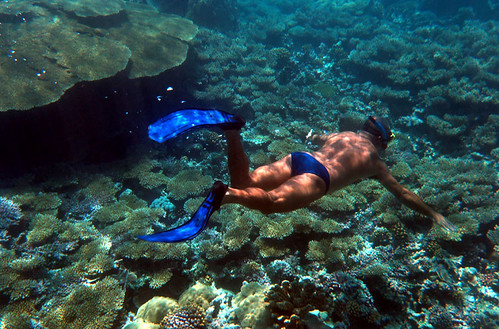 Soon we stitch our mainsail by hand, fill our water and diesel tanks, dodge some last attempts to get “gifts for the good service” and with deep, great relief (it is nice not to feel like a hostage anymore) we depart for Gan, Maldives. We are again plagues by weak breezes and dead calms and we sail about 50% of the time. We see dolphins almost daily and the last morning before arrival even whales show up, the sound of their breath is ever startling; with a flip and wave of their tailfins they regain the deep. We enter Addu atoll at 3 am since it is easily navigable. In the morning we understand what paradise we're in: countless turtles, rays, mantas and other fish are all around us, right in the middle of the harbor!
Soon we stitch our mainsail by hand, fill our water and diesel tanks, dodge some last attempts to get “gifts for the good service” and with deep, great relief (it is nice not to feel like a hostage anymore) we depart for Gan, Maldives. We are again plagues by weak breezes and dead calms and we sail about 50% of the time. We see dolphins almost daily and the last morning before arrival even whales show up, the sound of their breath is ever startling; with a flip and wave of their tailfins they regain the deep. We enter Addu atoll at 3 am since it is easily navigable. In the morning we understand what paradise we're in: countless turtles, rays, mantas and other fish are all around us, right in the middle of the harbor!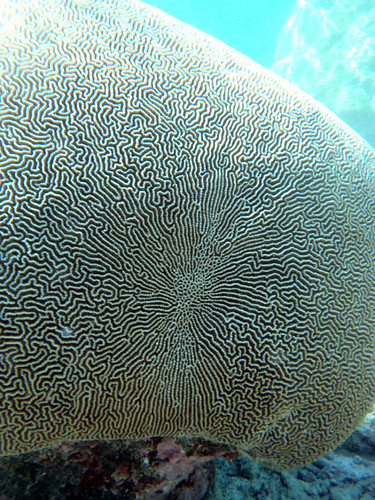 The Maldivian authorities are correct and pleasant, though any permanence over 72 hours means having to buy a 300 Euros cruising permit (even though we don't want to go anywhere), so we figure that we'll hurry and resupply and leave for Chagos within that timeframe. We still manage to see Gan and meet its people: stunning expanses of turquoise waters and sleepy island pace, a nice coffee and a chat at someone’s home. We are sad to leave so soon.
The Maldivian authorities are correct and pleasant, though any permanence over 72 hours means having to buy a 300 Euros cruising permit (even though we don't want to go anywhere), so we figure that we'll hurry and resupply and leave for Chagos within that timeframe. We still manage to see Gan and meet its people: stunning expanses of turquoise waters and sleepy island pace, a nice coffee and a chat at someone’s home. We are sad to leave so soon.
Oddly, we manage to have a perfect sail down to Peros Banhos, steady light breezes and autopilot: the boat practically steers herself already. We enter the northern pass by Ile Diamant late in the afternoon (25/02/’11), attracting the attention of a million sea birds and a flock of excited dolphins.
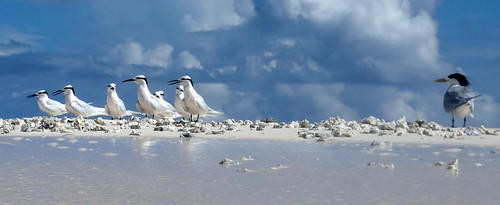 |
| Think different |
 |
| You would not expect to find this between your toes |
 |
| Strolling at 7am |
I borrow the spear gun again, but instead of fish (lame!) I manage to get three delicious lobsters, plus squid at any time for pasta or even fried rings. Slowly the anchorage swells to over ten boats, and with the return of the flock of children on them we see that it’s time to move on to Ile Fouquet.
Ile Fouquet is another slice of perfection. The island itself with a little shaded BBQ camp, surrounding sandy areas and the reef in separate long patches each hosting its own particular multitude of life. The underwater photo safari goes on, and also the lobster catching!
 |
By the time the French “colony” reaches us we are ready once again to move on and also to start meeting some people, isolation even partial gets quite alienating in the long run.
One morning then after the customary 7:00 AM snorkel (that’s when more fish is seen around) we set off for Saloman Atoll.
In accordance with the sailor’s unwritten rule, the wind is on the nose, and the engine comes to the rescue once again. We enter the only pass in good light and accompanied by a school of the biggest bottlenose dolphins: a particularly enormous one swims alongside; we nickname it the “grandfather”. The coral bommies in the lagoon are easily spotted, the water gets murky so we cross on the eastern side where the patches are more spread apart and the navigation easier. There are over fifteen boats already anchored or moored by Boddam, many reefs are marked by a little floater as the closer spots to the island are literally surrounded by coral. We notice one vacant mooring quite near the island and we go for it. While in Peros Banhos one anchors deep and then swims to the coral wall, Boddam’s anchorage is one evenly deep (5 to 8 meters) and pristine coral garden, making it a delight to snorkel right off the boat, but also a crime to drop anchor anywhere. So the disused mooring is a blessing for our peace of mind and clean conscience!
 The yachters coming to reside in Boddam for several months at a time have in fact reused the wrist thick fishing lines who drifted on the island to fashion moorings attached to the base of bommies, a nice trick, good for the boats and good for the corals!
The yachters coming to reside in Boddam for several months at a time have in fact reused the wrist thick fishing lines who drifted on the island to fashion moorings attached to the base of bommies, a nice trick, good for the boats and good for the corals!
This year though the permits have been shortened to 28 days, and we are the last batch to enjoy the three months permit. So we get to meet quite a bunch of Boddams’ old timers: people who through the years have come to the island for sometimes six or more months at a time, doing a fine job at keeping the paths clear, the moorings checked, and preventing the total decay of a few structures, all the while keeping an “eye” on undisciplined yachters too keen on feeding off the islands every comestible item or too lazy, say, to separate their garbage for collection by the BIOT.
 Unluckily, for the record, we have witnessed in Peros Banhos quite a destructive attitude from many yachters: digging for turtle eggs/birds eggs for an omelets, making pate’ out of the protected coconut crabs, gathering for food the few giant clams who did manage to get giant, spear fishing way more than the necessary, leaving behind dirty fuel and spent engine oil and in one case apparently chopping down a coconut tree in order to get at the coconuts (?!?!?!?!?!?!?).
Unluckily, for the record, we have witnessed in Peros Banhos quite a destructive attitude from many yachters: digging for turtle eggs/birds eggs for an omelets, making pate’ out of the protected coconut crabs, gathering for food the few giant clams who did manage to get giant, spear fishing way more than the necessary, leaving behind dirty fuel and spent engine oil and in one case apparently chopping down a coconut tree in order to get at the coconuts (?!?!?!?!?!?!?).
Will we EVER learn to respect nature (at least just a tiny bit)?!
I often deluded myself that people choosing the cruisers’ lifestyle do it out of love for freedom & nature, I was wrong: way more often is out of vanity and sometimes lack of other options in the “real” world.
After the roughness of Peros Banhos, Boddam feels like a small town: there’s always a small group of people ashore either doing the laundry, baking bread on the fire, filleting fish from trolling outside the reef, collecting/cleaning coconuts, or simply sitting around the table for a chat.
At last after the long snorkeling sessions we can have some extra distraction to keep us busy and entertained: planning and cooking for potluck dinners, getting yellow-fin tuna from the committed fishermen for delicious sashimi, going for walks on the long marked paths in the island, having a beer in company in the evening before retiring to our boat. On Boddam the active vigilance of yachters has been indeed a bounty to the local nature: sea turtles abound and even in one occasion let us touch them, hermit crabs are ever bigger and coconut crabs are so abundant that they stroll between our legs by day or night.
We make some good friends, party on the beach, collect some clams for a pasta, snorkel on the outer reef, eat sashimi until we burst, visit other boats, sail the dinghy, see more ruins (the jail, the church, the infirmary, the shop, another cemetery), then we move on to Takamaka and Fouquet.
We anchor on the infamous sand spit without a problem and spend some more nice days there (yacht wrecks) doing the usual. The usual is in-fact starting to get a little repetitive, and we long for the trappings of civilization (such as a proper hot shower etc.) and a few more stimuli than endless reading books, walking and swimming.
After one week of preparing in Takamaka we say enough and one bright day (April 30th) we leave for Rodrigues, Mascarene Islands…
